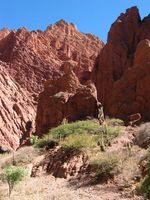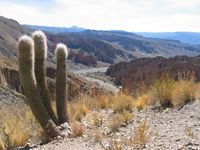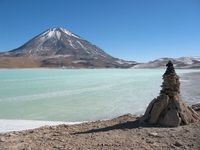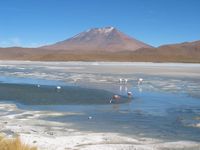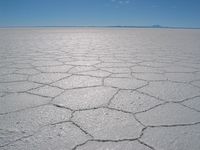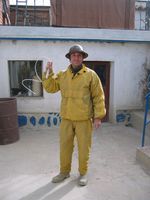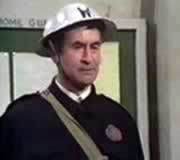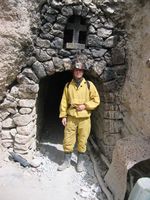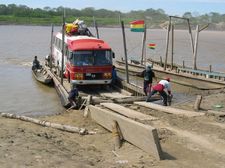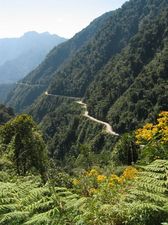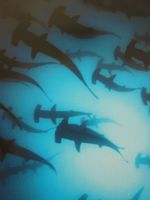Now it must be said that before I came to South America I knew almost nothing about Bolivia, AND, given that one of my favorite films is 'Butch Cassidy and The Sundance Kid' it is very possible that the ideas I DID have were a little off the mark. Even so, for some unknown reason it was THE place that appealed to me most.
My first stop in Bolivia was the small town of Tupiza some two hours over the border from Argentina. A dusty little town with more than its fair share of Italian restaurants - I have to admit I'd been expecting the food options to be more along the lines of 'rice with beans' or 'beans with rice' rather than "would you like parmesan with your Bolognese."
So, a pleasant enough little place and although it may not be full of bandits, mules, and people in large sombreros, one of the things that I did have right was that there was Cacti EVERYWHERE! As soon as you reach the edge of town (typically only a few blocks in any direction) you're heading out into the dry, dusty, rocky, catctus filled valleys. Just the place to get ambushed by Bandits if you ask me!
As it turns out, Tupiza had been a favourite hangout for Butch & Sundance and it wasn't very far from here, in the town of San Vincente, where they finally met their end. Not surprisingly most of the hostals in town were showing the movie and offered "Butch & Sundance" tours.
Another of the very popular trips from Tupiza is a 4 day trip through to Uyuni. This is where I was heading.
My travelling companions for the 4 day trip to Uyuni were: Richard & Sinead (Ireland), Amelie (France) and Jose (Spain). We were provided with a driver/guide and a cook.The 7 of us squeezed into a Toyota 4x4, loaded with supplies, and set out in search of Uyuni.
Most of the first day was taken up with driving, watching the dusty but dramatic scenery pass by through the window. We also gained a lot of altitude during the day and both Jose and Amelie felt some mild effects of altitude sickness -munching their way through a large bag of Coca leaves in an attempt to 'sooth' the symptoms.
There were quite a few frozen river crossings to tackle in the 4x4 and on a couple of occassions, having broken through the ice, the Toyota became stuck. Here we'd clamber out and try to break enough ice from around the wheels (fortunately they'd packed a Pickaxe!) to be able to wedge enough rocks under the tyres to gain traction. Cold, wet work!
Eventually, we reached our first nights accomodation - up at around 4000m. Jose continued to have problems with the altitude and we ALL had difficulty with the cold.
The cold nights are a lasting memory of this trip. I'd rented an 'All Seasons' sleeping bag and every night i'd still try to find as many blankets as I could. I'd go to bed fully clothed (including hat and gloves) and still be cold. The first couple of hours travel each day were also very cold. The Toyota didn't have any form of heating, so until the sun came up we'd huddle inside, covered by sleeping bags, scraping the ice from the inside of the windows.
During this first night we met a group of 6 Argentinians who were making the same trip to Uyuni. However, one of their group was experiencing serious trouble with the altitude. We found out the next morning that at 3am a doctor had been called out (not sure where from as we appeared to be 'in the middle of nowhere') and they abandoned the trip in order to return to Tupiza.
The second and third days took us through some of the most beautiful scenery in the National Park including The Dali Desert - rumor has it that Dali came here and drew inspiration from the rock formations for his own works. What do you think? Laguna Verde - An aptly named emerald lake backed by a rather dramatic snow capped volcano. And, Laguna Colorada with its flocks of Flamingos.
Of course the cold nights continued, but at least the altitude reduced and thankfully Jose started to feel better.
Day four brought us to The Salar de Uyuni, the worlds largest salt flats - where we watched the sunrise. An incredible expanse of white nothingness as far as the eye can see. Rather surreal and a perfect opportunity to take a few 'fun' photos that mess with perspective. Without doubt a unique and memorable location.
In the middle of the salt flats there is a building that used to be a Hotel. Its known as The Salt Hotel, not only because of its location, but also because it is made entirely from Salt - the floor, the walls, the chairs, the beds, virtually everything. However, as the National Park authorities declared that hotels are not allowed in the Park, it has now become a 'Museum' that appears to make its money by selling overpriced snacks and drinks.
So, having survived the 4 day trip from Tupiza to Uyuni, we said goodbye to our driver and cook and went in search of hot showers and Pizza. The town of Uyuni itself didn't have a lot to offer so after one night I was ready to move on. Jose, Amelie and myself decided to head to the mining town of Potosi.
By the way, i'd like to thank Geoff Long for the title :-)
